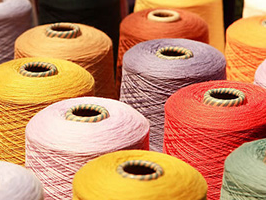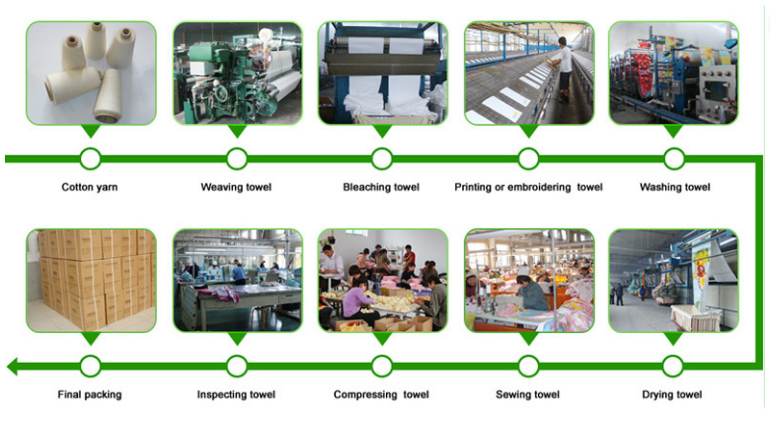Your Location: Home >> News Center >> Company News >> The production process of towel
The production process of towel

The Production Process Of Compressed Towel

How To Produce A Towel
1. Warping
Warp is longitudinal threads in a piece of woven material that are tightly stretched or warped on a beam. The large spools of just-spun cotton are ready to be warped or wound on a beam that will be inserted into the loom for weaving.A warping beam is then warped in which threads are anchored and wrapped to a large beam in hundreds of parallel rows. Different towel widths require different numbers of warp threads.
2. Weaving
Towels are woven on dobby looms, meaning each loom has two sets or warp and thus two warp beams—one warp is called the ground warp and forms the body of the towel and the other is called the pile warp and it produces the terry pile or loop. The filler yarn is programmed so that it is loosely laid into the woven fabric. When this loose filler is beaten or pressed into the fabric, the slack is pushed up becoming a little loop.
3. Bleaching
Once the toweling is made. It is then transported to bleaching as huge rolls of fabric and put into a water bath with bleaching chemicals such as hydrogen peroxide, caustic defoamers, and other proprietary ingredients. All toweling must be dyed pure white before it is dyed any color. The wet toweling laden with chemicals is then subjected to tremendously high temperatures. The heat makes the chemicals react, bleaching the towel.
4. Dyeing
If the towel is to be dyed, the large, dried uncut rolls are taken to large vats of chemical dyes, which have proven over time to provide colorfast toweling after extensive residential laundering. After being immersed in the vat, the toweling is removed and pressed between two heavy rollers which forces the dye down into the toweling. A thorough steaming sets the color. The toweling is again steam-dried, fluffed in the drying process, and then the dyed towels are ready for cutting, hemming, and labeling.
5. Printing
If the towel is to be printed, toweling fabric in roll will need to be cut into single piece. Meanwhile printing mold need to be prepared. The printing mold is formed with a metal frame and a piece of silk screen at the bottom in tension with tens of thousands holes all over. Parts of hole will be fill with glue while others left empty for the dyes. Each piece will be spread on a moving plate at the printing machine. The moving towels in plate will be stop by each silk screen printing frame. Then the silk screen frame fall down and cover the whole towel fabric with some pressure. The the iron stick in the frame push the printing ink from one side to the other. Some ink go through the empty hole and seep into the towel fabric.
6. Shearing
Some clients like a towel with smooth and soft surface. Then the towels need to be sheared before cutting and sewing. The toweling fabric in rools need to go through the shearing machine with a cutting knife inside. The knife will cut stand terry loops when the fabric moving on. Then the towel with cut terry loops will go through a brush which make the cut loops become piles.
7. Cutting, Sewing
The towel in bundle need to cut into single piece and then be sewed via sewing machine. The loose fabric edge will need to folded twice and stitched to make sure the towel won't break after washing.
8. Packing
The sewed towel will be deliver to the packing team. In this place, towels need to check carefully at first. All the loose thread on towels will be cut off. Towels in fault will be picked out and the good one will be packed into polybag and then into carton box. Failed one will be repaired if it's possible. Towel can not be repaired will be put aside as unpassed goods.
Hits: 【Print】
Pre:none Next:1.What’s the cost and leading time for samples?

